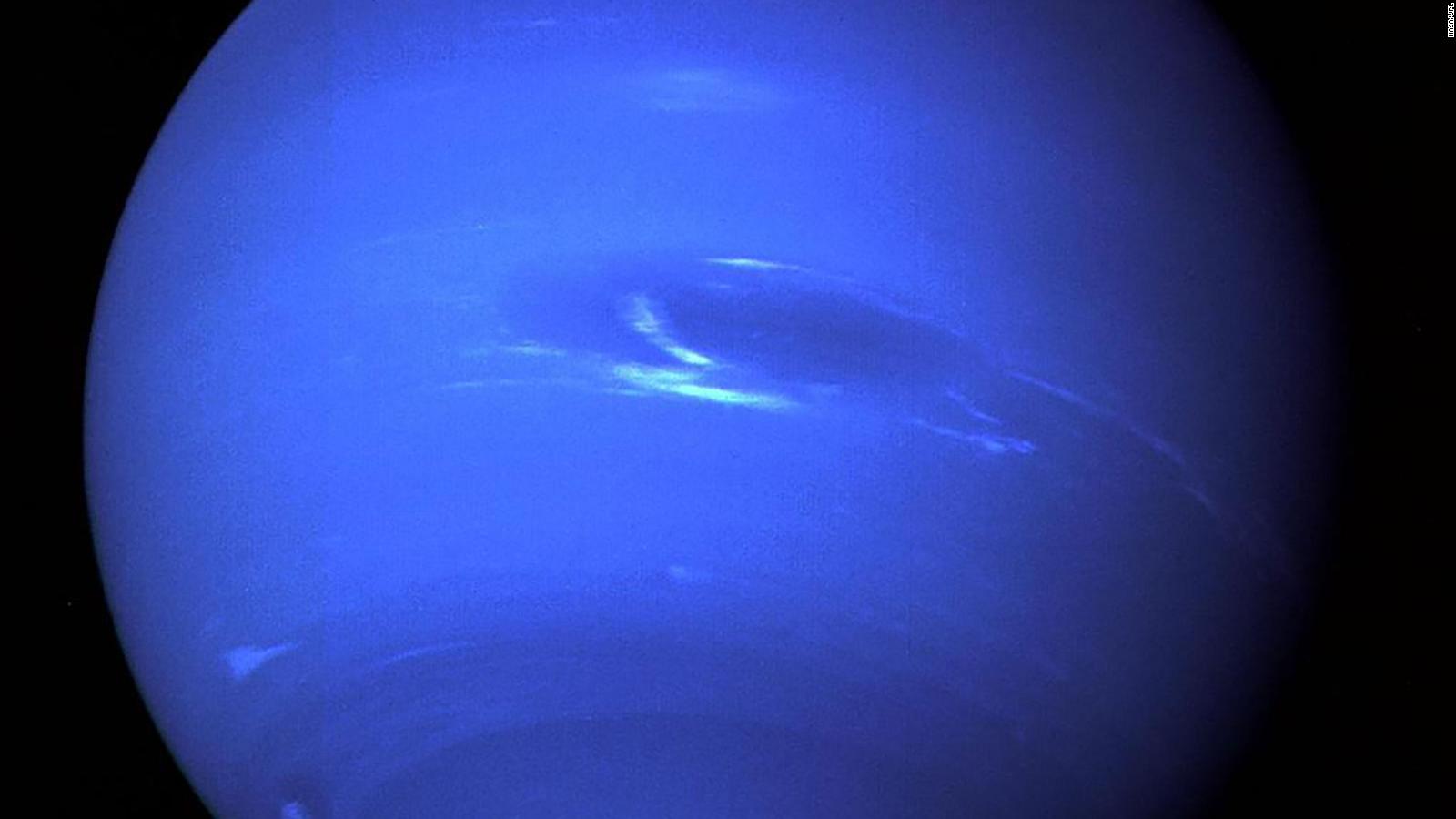Yet the wealth of data captured by NASA's Voyager 2 spacecraft some 34 years ago is still revealing tantalizing hints and reminding scientists of why we need to go back.
Voyager 2 flew by Uranus in 1986, and now, thanks to a little blip discovered in some data, NASA scientists know it also flew through a plasmoid. A plasmoid is a giant magnetic bubble that likely pinched off part of the planet's atmosphere, sending it out into space.
They found it while looking through old data to find questions they wanted to answer on future potential missions to Uranus.
It's not unusual for planets to lose their atmospheres. Venus, Jupiter, Saturn and even Earth leak their atmospheres into space, according to NASA.
Over time, this can cause a big impact to a planet. Take Mars, for example: The red planet lost its atmosphere almost entirely over four billion years.
"Mars used to be a wet planet with a thick atmosphere," said Gina DiBraccio, space physicist at NASA's Goddard Space Flight Center and project scientist for the Mars Atmosphere and Volatile Evolution, or MAVEN mission. "It evolved over time to become the dry planet we see today."
DiBraccio and her colleague Dan Gershman study planetary magnetic fields and the way they interact with the sun.
Planetary magnetic fields act like gatekeepers, at times protecting their atmospheres from the stream of solar wind released by the sun. But they can also allow atmospheres to escape as lines in the magnetic field tangle together.
"The way in which the sun's solar wind interacts with Uranus is unlike any planet we've ever explored," DiBraccio said. "We are left with questions regarding to what degree the solar wind affects dynamics at Uranus such as transporting atmospheric particles, transferring energy and even changing the planet's climate over time."
Uranus is a strange planet, and it's also unlike any exoplanet discovered so far. It has a barrel roll orbit, tilted 90 degrees and spinning on its side. It takes 17 hours to complete one spin.
"This tilt causes dramatic seasons on the planet, and we don't fully understand the impact," she said. "It is believed that the seasons change the way that the solar wind interacts with Uranus' magnetic field and may also have an impact on atmospheric heating, for example."
NASA wants to return to investigate the planet's oddities, and DiBraccio and Gershman were part of a team looking at designing a future mission to revisit the ice giants.
A 60-second zigzag in Voyager 2's magnetometer readings, which measured the strength and direction of the planet's magnetic field, revealed what looked like a plasmoid to them. It's the first time one has been detected escaping Uranus.
In this case, the giant plasma bubble full of energized hydrogen detached from the magnetotail. It truly is like the tail end of the magnetic field, which is pushed off of the planet by the sun.
The plasmoid, which resembled a cylinder, was 127,000 miles long and 250,000 miles across. Inside the plasmoid, they observed loops -- shaped by the planet's spin as they released into space.
Such a large plasmoid could effectively remove between 15% to 55% of atmospheric mass -- and this could be the main way Uranus is losing its atmosphere, they said.
Only future observations will provide more information about what's really happening with the planet and its runaway atmosphere.
"Scientists are currently exploring future opportunities to visit Uranus and Neptune," DiBraccio said. "This includes mission concepts that would send spacecraft to orbit one of these planets and even send a probe into its atmosphere."
A mission like this would launch around 2030, NASA estimates. Teams are working hard to develop mission concepts, based on 2017 review.
It's something that the Voyager teams -- which are still actively monitoring the two spacecraft as they explore uncharted territory beyond our solar system -- have hoped for.
When the Voyager spacecraft flew by the planets in our solar system, they helped answer some questions while creating more. But no missions have followed up on Uranus or Neptune since the 1986 and 1989 flybys by Voyager 2.
"We need to develop an orbiter for each of those planets," said Suzanne Dodd, Voyager project manager. "At Uranus, the five major moons are very different. They have unique geological history, so we need to understand how they were formed or captured. Uranus has a rotational pole that is tipped on its side more than the Earth, so we need an understanding of why that happened.
"At Neptune, there are a great amount of features in [the] atmosphere similar to Jupiter and Saturn. And Neptune's moon Triton is of interest because of the methane geysers on it."
One more immediate way to follow up on the atmospheres of these ice giants is NASA's James Webb Space Telescope, launching next year. The telescope can characterize their atmospheres by peering into them and even discern chemistry, weather and circulation patterns, the agency said.
Not only could future missions answer key questions about the ice giant planets, but help us understand planets outside of our solar system as well.
"As scientists, we are really eager to study Uranus and Neptune to not only learn more about our solar system planets, but also because these ice giants will teach us about exoplanets," DiBraccio said.
"Exploring the diverse set of planetary systems in our own solar system gives us an opportunity to apply our findings to extraterrestrial worlds. These findings are definitely applicable to exoplanets because a majority of the exoplanets that have been discovered are sub-Neptune size."
Bagikan Berita Ini


















0 Response to "Scientists found a secret in old Voyager 2 data. This is why we need to revisit Uranus and Neptune - CNN"
Post a Comment